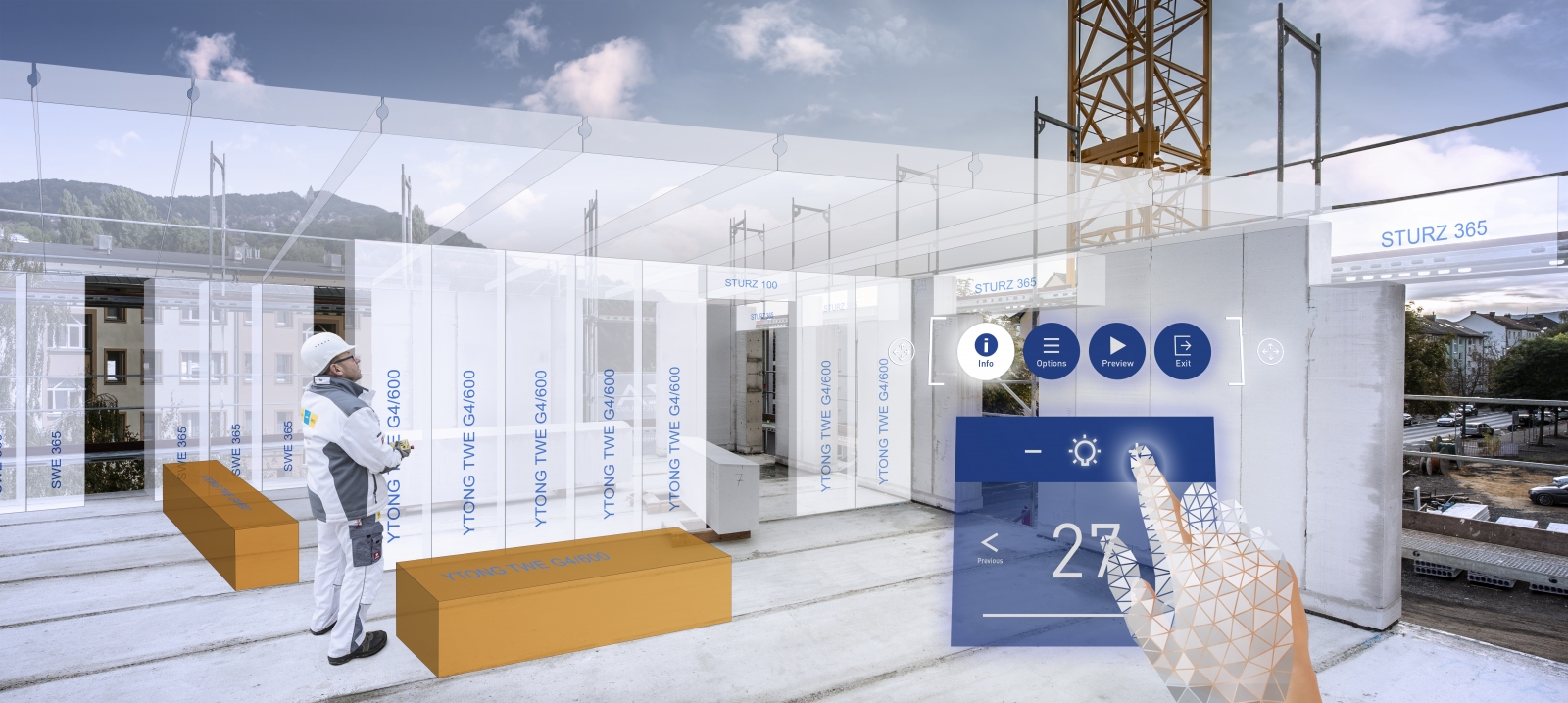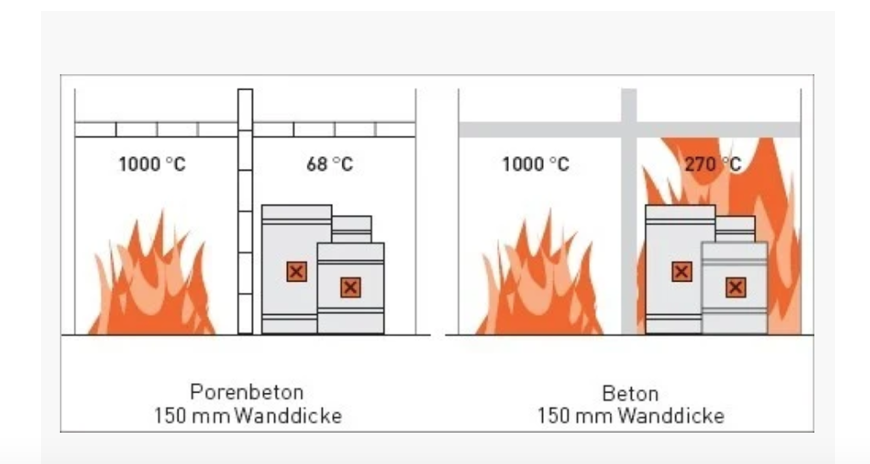It is hard to imagine a more challenging fire safety project than building a Gigafactory to produce battery cells. If such batteries catch fire, the consequences can be devastating for both people and buildings in a very short time. That is why Freyr Battery Norway chose autoclaved aerated concrete (AAC) for the construction of its new factory buildings in the Norwegian town of Mo i Rana. Some 35,000 m2 of Hebel fire protection walls are being supplied by Xella Norway. The building material does not burn or drip. Nor does it emit toxic gases, smoke or harmful substances. The building owners were also impressed by another life-saving feature: AAC walls contain the fire. (More about this project)
BIM supports the planning process
At Xella, fire safety is a top priority in the development of building solutions. To ensure that fire safety is considered as early as possible in the design phase, the company works with clients, architects and structural engineers. Building Information Modeling (BIM) plays an important role in this. In the digital application, the fire-resistant components and any penetration seals are directly visible to everyone involved in the project. Especially with the increasing electrification of society (solar panels, electric cars and bicycles) and stricter guidelines for the storage of hazardous materials, good cooperation in fire protection is crucial.

Architects face many challenges when designing new buildings, as well as renovating or adding floors to existing buildings. They have to balance form and function, both financially and aesthetically. They are also required by law to provide the highest level of fire protection. The aim is to slow down or, better still, prevent the spread of fire and smoke to other parts of the building. AAC building materials such as Ytong and Hebel offer both fire protection and architectural freedom.
Once the flames are already in full swing, a few minutes can mean the difference between life and death. That is why international building codes require numerous protective measures. Their purpose is to protect people who are inside the building and to make their escape as safe as possible. Because public buildings, commercial buildings and hotels are particularly crowded, they often have the most stringent fire safety requirements.
This includes visible elements such as fire escapes, and also fire protection that is invisible to the untrained eye. The material used is crucial to withstand the enormous heat generated.
You are on the safe side if you use AAC from Ytong or Hebel in the form of individual blocks, slabs or as a masonry composite or Multipor mineral insulation panels. Both of these materials are classified in the highest German building material class - A1. This means that they must have a melting point above 1,000 degrees Celsius and they must have a density of at least 30 kg/m³. Dispersion or alkyd resin-based paints and wallpapers also fall into this class.
Safe escape route
AAC and mineral insulation boards reduce the risk of a fire spreading and thus the extent of damage. Above all, however, they give people more time in the event of an emergency. The use of Multipor mineral insulation boards offers a further advantage: in the event of a fire, the purely mineral insulation boards do not emit any smoke and do not release any harmful substances even under extreme heat. In addition, the mineral insulation boards will not fall down and no burning material will drip onto people in flight.
The effect of small air chambers
In the event of a fire, optimized fire walls are particularly important. This is why international building codes require the highest standards for the safety of people inside the building. Inside the building or in the façade area, load-bearing fire walls must separate or define fire compartments. This applies, for example, to walls in stairwells and along escape routes. It also applies to interior load-bearing walls. In a worst-case scenario, these walls may be exposed to fire on two, three or even four sides.
Even then, they must prevent the spread of flames for as long as possible. Specifically, this means they must have at least 90 minutes of fire resistance and be able to withstand a specified impact load.
AAC as the ideal building material
"For these requirements, AAC is the ideal building material. Walls made of this material can withstand fire for a very long time," says Dipl.-Ing. Franz Loderer, Head of Application Research/Building Physics at Xella Technologie- und Forschungsgesellschaft mbH (T&F), describing its advantages.
"For example, there are fire resistance tests with a duration of of 360 minutes". The solid mineral structure and the water bound in the material are responsible for this resistance.
AAC is non-combustible with high thermal insulation. Loderer points out another requirement: "Fire protection walls not only have to withstand high temperatures, they also have to be stable against the loads that can occur in the event of a fire." For example, falling components or objects stored in a fire compartment. To this end, Xella T&F, in cooperation with external institutes such as MPA Braunschweig and MFP Leipzig, regularly tests the fire safety of wall systems made of newly developed building materials.
For example, a non-load-bearing fire wall made of AAC blocks of grade PP2-0.35; λ=0.09 W/(mK) ("Ytong Therm Standard") was heated up to 1,350 degrees Celsius in a fire room. The wall passed the test with flying colors. The same applies to load-bearing fire walls. These were tested under maximum temperatures with additional load-bearing capacity in the test halls at the Emstal plant.
Utilizing fire protection
This advantage of AAC was used, for example, by the architects in the reconstruction of the "De Boetzelaer" swimming pool in Monster, the Netherlands, which was completely destroyed by fire (More about the project). In this case, they chose Hebel's prefabricated AAC walls and roof slabs. The advantage is that AAC also absorbs temperature difference between the two sides of a wall. Even after several hours of fire, the temperature on the side of the wall facing away from the fire does not exceed 60°C. The architects placed the Hebel products from the inside of the building against the steel structure of the building. In this way, they created a fire-resistant shell for the building. Hebel fire-resistant panels were also used to clad the columns in the building. The architects fulfilled one of the client's main requirements: safety through non-combustible materials.
